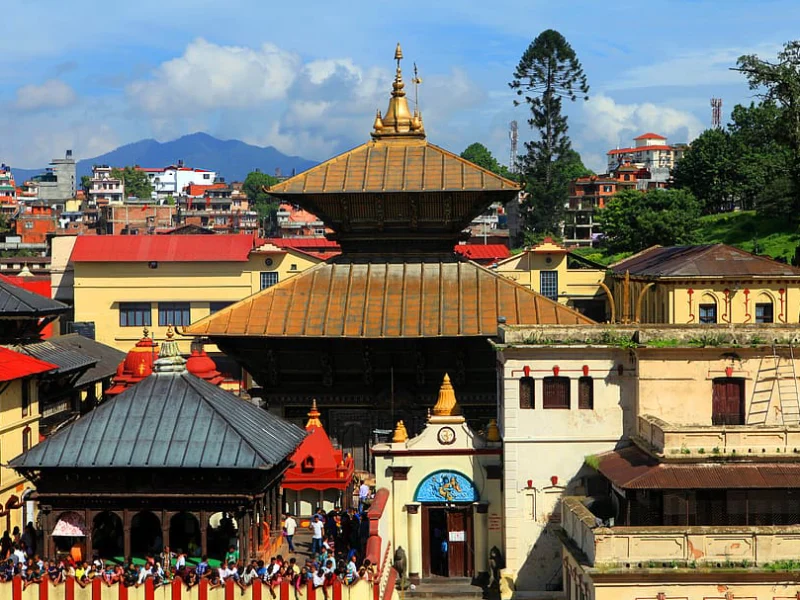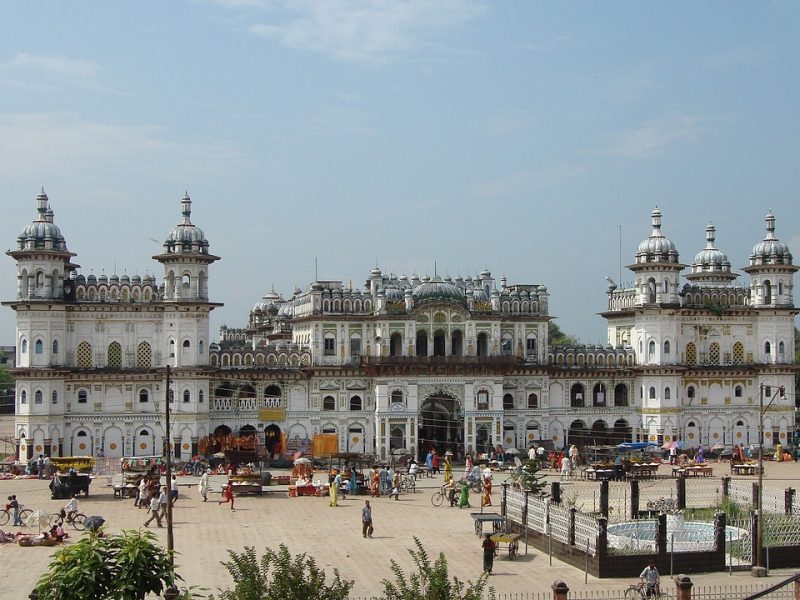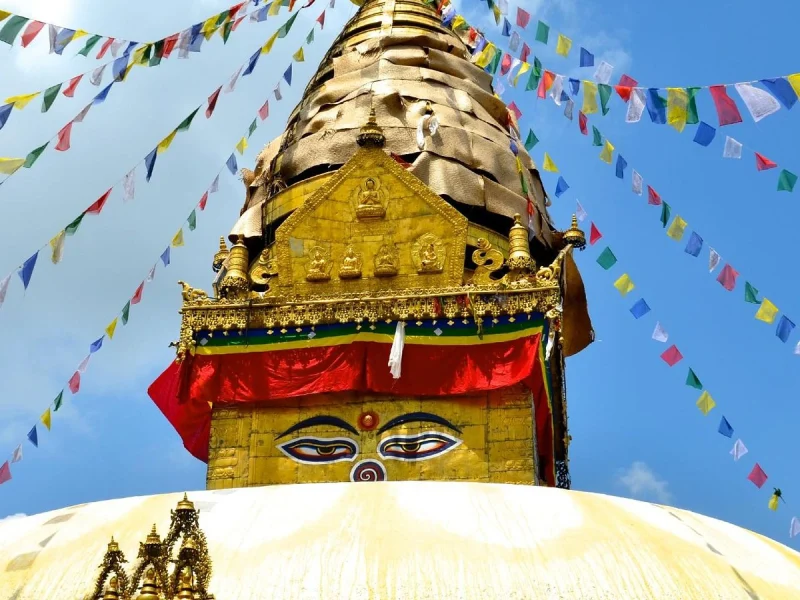Pilgrimage places are sacred sites that represent the essence of a faith or belief system, attracting pilgrims worldwide seeking blessings. And also spiritual enlightenment, or a closer connection with the divine. People revere these sites for their association with historical events, religious figures, or miraculous occurrences. In addition, believing them to possess spiritual energy. Pilgrimage Places In Nepal that you must visit to know about cultural and historical journey.
Pilgrimage places are diverse, reflecting the multiplicity of world religions, and often house artifacts, scriptures, or relics with deep symbolic meaning. Pilgrims embark on journeys to these sacred sites, often following prescribed routes or engaging in specific rituals.
The concept of pilgrimage is a universal theme in human history, expressing the desire for spiritual growth, transcendence, and a connection with the divine. Pilgrimage places also serve as hubs for cultural exchange, offering profound experiences for those embarking on the sacred journey.
Why Choose Nepal For Pilgrimage Places?
Nepal is a popular destination for pilgrimage due to its diverse religious and cultural heritage. Moreover stunning natural landscapes, and harmonious coexistence of Hinduism, Buddhism, Islam, and other religions. The country’s Lumbini, the birthplace of Buddha, offers a serene environment for Buddhist pilgrims. Hindu pilgrimage sites include Pashupatinath Temple and Muktinath Temple, dedicated to Lord Vishnu.
Nepal’s sacred Himalayan landscape provides a spiritually uplifting environment. Unique pilgrimage treks, such as Gosaikunda, offer physical and spiritual experiences. Trekking to Buddhist monasteries, like Tengboche Monastery in the Everest region, offers tranquility and tranquility. Nepal is also a popular destination for yoga and meditation retreats, offering a serene environment and cultural richness. Cultural festivals and rituals provide a deeper understanding of Nepalese traditions. Nepal’s affordability, warm hospitality, and diverse spiritual festivals make it an ideal choice for spiritual seekers.
List Of 10 Best Pilgrimage Places In Nepal For A Spiritual Soul
1.Pashupatinath Temple (Kathmandu)
The Pashupatinath Temple, located in Kathmandu, Nepal, dedicates itself as a sacred Hindu temple to Lord Shiva. Similarly, it is a UNESCO World Heritage Site and a significant Hindu pilgrimage site worldwide. The temple, built in the 5th century, is a two-tiered structure with a golden spire and includes smaller shrines and statues. The main deity inside the temple is a sacred lingam, representing Lord Shiva’s cosmic energy.
The temple situates itself on the banks of the sacred Bagmati River, where believers hold the cremation. Ghats assist those cremated in attaining liberation. Temple hosts a continuous stream of devotees performing rituals and prayers, with Maha Shivaratri being the most significant festival. The temple is also a gathering place for sadhus and ascetics, who renounce worldly life for spiritual liberation. Non-Hindu visitors are not allowed to enter the main temple but can explore the surrounding area.

2.Lumbini (Rupandehi District)
Lumbini, a UNESCO World Heritage Site in Nepal, reveres itself as a pilgrimage site. And those believed to be the birthplace of Siddhartha Gautama, later known as Buddha. The site, located in the Rupandehi District near the border with India, considers itself one of the four main pilgrimage sites related to Buddha’s life. The Maya Devi Temple, a key pilgrimage site, situates itself at the sacred garden, also a UNESCO World Heritage Site. The Ashoka Pillar, an archaeological artifact, is also located at the site.
The Puskarni Pond, believed to be the same pond where Queen Maya Devi bathed before giving birth, is a popular spot for pilgrims to take ritual baths for spiritual purification. Lumbini hosts various festivals and events, including Buddha Jayanti, which celebrates Buddha’s birth, enlightenment, and death.
3.Muktinath Temple (Mustang District)
Muktinath Temple, located in Nepal’s Mustang District, is a sacred pilgrimage site for both Hindus and Buddhists. At 3,800 meters, devotees dedicate it to Lord Vishnu, considering it a place of salvation and liberation. The temple complex includes a Vishnu temple and a Buddhist Gompa, reflecting the coexistence of both traditions. Similarly, there include Salagrama stones, Jwala Mai Temple, and Mukti Dhara, a semi-frozen waterfall believed to cleanse sins and bring salvation.
The temple is a significant stop on the Annapurna Circuit trekking route, offering stunning views of the Himalayas and adding a sense of adventure. The temple attracts a large number of pilgrims during major Hindu festivals, particularly during Muktinath Jatra, which brings spiritual merit. Accessible by road, foot, horseback, or helicopter services, Muktinath Temple offers a spiritually enriching experience for both pilgrims and trekkers.
4.Janakpur (Dhanusa District)
Janakpur, a city in Nepal, is a significant religious and cultural destination, particularly for Hindus. The birthplace of Goddess Sita, the wife of Lord Rama in the Hindu epic Ramayana, bears the name. The city associates itself with the events of the Ramayana, including the Swayamvar ceremony where Sita chose Lord Rama as her husband.
The Janaki Mandir, a grand Hindu temple dedicated to Sita, is the main attraction, built in a traditional Rajasthani architectural style. Believers consider the Ram-Sita Vivah Mandap, a sacred site, as the location where Lord Rama and Sita got married. The Bibaha Panchami Festival, celebrated annually, commemorates the wedding. Janakpur is part of the Ramayana Circuit, a series of pilgrimage sites associated with the Ramayana. In addition, The city is accessible by road and air, with an airport for domestic flights.

5.Gosaikunda (Langtang National Park)
Gosaikunda, a high-altitude alpine lake in Nepal, is a sacred pilgrimage site for both Hindus and Buddhists. Situated at an elevation of 4,380 meters, it is part of the Langtang trekking route and is accessible from Dhunche or Syabrubesi. The lake is believed to be the abode of Lord Shiva and is associated with Guru Rinpoche.
The Gosaikunda Trek is a popular route, attracting trekkers and pilgrims alike to Majestic peaks. Langtang Lirung and Ganesh Himal, surround the lake. Believers hold that a holy dip in the lake during the full moon in August washes away sins and brings blessings. Often frozen during winter, the lake’s mystique is enhanced. The trek takes trekkers through local Tamang and Sherpa villages, offering an opportunity to experience the region’s culture and traditions.
6.Swyambhunath Stupa (Kathmandu)
Swyambhunath Stupa, also known as the Monkey Temple, is a UNESCO World Heritage Site in Nepal, renowned for its religious and cultural significance. Located in the Kathmandu Valley, it is one of the oldest and most sacred stupas in Nepal, with a history dating back over 2,000 years. The stupa follows a classic Nepalese architectural style, featuring a white dome and a golden spire with Buddha eyes symbolizing wisdom.
It is a symbol of both Buddhism and Hinduism, with the pinnacle representing the unity of the five elements and the thirteen-tiered spire symbolizing the thirteen stages to enlightenment. The stupa is also associated with the deity Manjushri, symbolizing the deity Manjushri. The stupa is surrounded by a monastic complex, offering a serene atmosphere. It is also a site of various Buddhist ceremonies and festivals, including the Tibetan New Year.
7.Boudhanath Stupa (Kathmandu)
Boudhanath Stupa, also known as Boudha or Bodnath, is a significant Buddhist stupa in Nepal, located in the eastern part of Kathmandu. It is a UNESCO World Heritage Site and a significant pilgrimage site. The stupa has undergone renovations and reconstructions, with the present structure built in the 14th century. It follows a classic stupa design, featuring a large mandala base, a hemispherical dome, and a square tower topped with a spire and gilded pinnacle.
Numerous symbols and Buddha’s eyes adorn the stupa, symbolizing the omnipresence of Buddha and the watchful compassion guiding sentient beings toward enlightenment. The spire gilds itself in gold, crowned with a ceremonial umbrella at the top. However, Boudhanath attracts a constant stream of Buddhist pilgrims and devotees who circumambulate it in a clockwise direction, known as kora, to accumulate positive karma. The stupa has been a center for Tibetan Buddhist culture in Kathmandu and is a popular tourist destination.
8.Manakamana Temple (Gorkha District)
The sacred Hindu temple, Manakamana Temple, in Nepal, is located itself in the Gorkha District and is associated with a legend about the goddess Bhagwati. But believers hold that Lakhan Thapa discovered the goddess at the spot where they believe the temple was built. Access to the temple is via a cable car, one of the longest in Nepal, which offers breathtaking views of the surrounding hills and the Trishuli River.
The temple is a pagoda-style structure with traditional Nepali architecture, intricate wood carvings, and religious symbols. Devotees perform various pujas and rituals to seek the goddess’s blessings. The temple is also a popular tourist destination, offering panoramic views of the Himalayan range, the Trishuli River, and lush valleys. The area around Manakamana reflects the local culture of the Gorkha region, offering visitors the opportunity to explore nearby villages and experience the traditional lifestyle.
9.Baraha Chhetra (Dhanusha District)
Baraha Chhetra, a significant pilgrimage site in Nepal, is dedicated to Lord Baraha, an incarnation of Lord Vishnu. The temple complex, located in the Dhanusa District, is a major holy site in the country. Believers attribute the temple as the spot where Lord Baraha’s tusks touched the ground during a divine rescue mission.
The main temple, Baraha Chhetra Temple, is a traditional Nepalese design with intricate carvings and sculptures depicting Hindu mythology. The temple is also a significant site for the annual Baraha Kshetra Mela, a religious fair organized during the Nepali month of Chaitra. Natural ponds surround the temple complex, believed to purify the soul and bring spiritual merit. The area’s excellent connectivity makes it a convenient destination for pilgrims and tourists.
10.Tengboche Monastery (Khumbu Region)
Tengboche Monastery, also known as Dawa Choling Gompa, is a Buddhist monastery in Nepal’s Khumbu region, located at an elevation of 3,867 meters. Built-in 1916 by Lama Gulu, it is a significant spiritual center and a significant part of the Nyingma sect of Tibetan Buddhism. The Drukpa Kagyu school includes the monastery and is renowned for hosting the annual Mani Rimdu festival, a vibrant Buddhist celebration.
The monastery offers panoramic views of the world’s highest peaks, including Mount Everest, Lhotse, Nuptse, Ama Dablam, and Thamserku. Tengboche Monastery is a popular trekking destination, offering a unique opportunity to experience Sherpa culture, witness religious ceremonies, and enjoy the natural beauty of the Himalayan landscape. Moreover, visitors can engage with the monks, attend prayer ceremonies, and learn about the cultural and spiritual traditions of Tibetan Buddhism practiced in the monastery. Tengboche Monastery remains a cherished destination for those seeking a connection with the Himalayan landscape and Tibetan Buddhist traditions.
Conclusion
Nepal offers a diverse spiritual journey, showcasing the country’s rich religious and cultural tapestry. From Kathmandu’s Pashupatinath Temple to Lumbini’s birthplace of Lord Buddha, these sites offer a holistic experience for the spiritual soul. The Pashupatinath Temple in Kathmandu symbolizes devotion to Lord Shiva, while the Swayambhunath Stupa offers panoramic views. The sacred cities of Janakpur and Baraha Chhetra, associated with the Ramayana, attract pilgrims seeking divine blessings. Nepal’s Himalayan region offers natural beauty and religious significance, while Manakamana Temple, accessible by cable car, holds a special place for devotees seeking goddess blessings. Pilgrimage Places In Nepal for all religious beliefs.
Frequently Asked Questions (FAQs)
1.What is the best time to visit the pilgrimage places in Nepal?
The best time to visit the pilgrimage places in Nepal is during the spring (March to May) and autumn (September to November) seasons. These months offer pleasant weather, clear skies, and favorable conditions for trekking to higher-altitude destinations.
2.Are there any specific rituals or festivals celebrated at these pilgrimage places?
Yes, many of the pilgrimage places in Nepal have specific rituals and festivals. For example, Pashupatinath hosts the Maha Shivaratri festival, and Tengboche Monastery organizes the Mani Rimdu festival. Understanding the local festival calendar can enhance the pilgrimage experience.
3.How can one reach these pilgrimage places in Nepal?
The accessibility varies for each pilgrimage place. Some, like Pashupatinath and Swayambhunath in Kathmandu, are easily reachable by road. Others, such as Muktinath and Gosaikunda, may require trekking. Janakpur and Lumbini are accessible by road, and Manakamana has a cable car service. Tengboche Monastery is typically reached through the Everest Base Camp trek.
4.Are there accommodations available near these pilgrimage sites?
Yes, accommodations are available near most pilgrimage sites in Nepal. Pilgrimage destinations with high tourist traffic, like Kathmandu, have a range of hotels, guesthouses, and lodges. In trekking regions, teahouses and lodges cater to pilgrims and trekkers.
5.Is it necessary to engage in trekking to visit the Himalayan pilgrimage sites?
While trekking is a common way to reach Himalayan pilgrimage sites like Muktinath and Tengboche, alternative transportation options, such as domestic flights and road access, are available for those who prefer not to trek. For instance, Muktinath can be reached by a combination of flight and road transport.
Introducing Trek Me Nepal: Embark on Unforgettable Journeys
At Trek Me Nepal, every step you take should be an adventure, every breath you inhale should be filled with the essence of nature, and every heartbeat should resonate with the rhythm of the mountains. We are a passionate team of explorers committed to crafting unforgettable trekking experiences in the breathtaking landscapes of Nepal.


Comment (0)